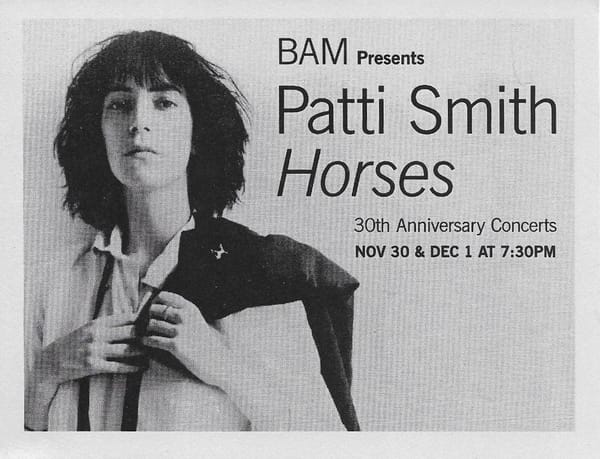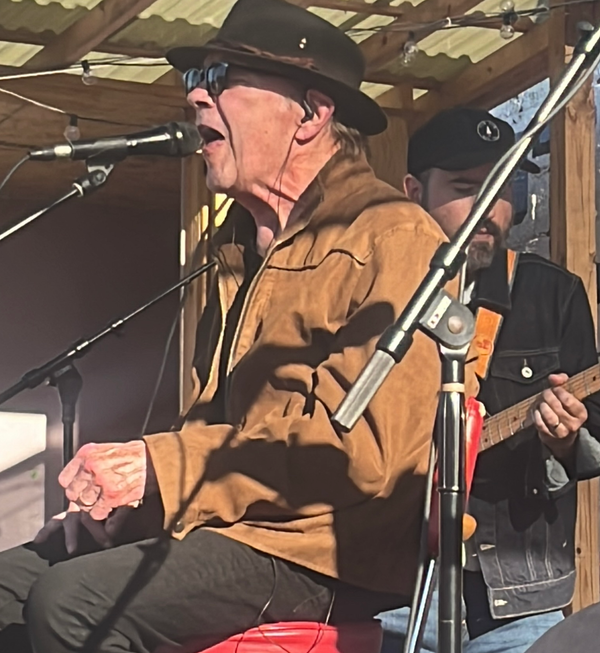about a film about Brian Peter George St. John le Baptiste de la Salle Eno.
This film is not boring.
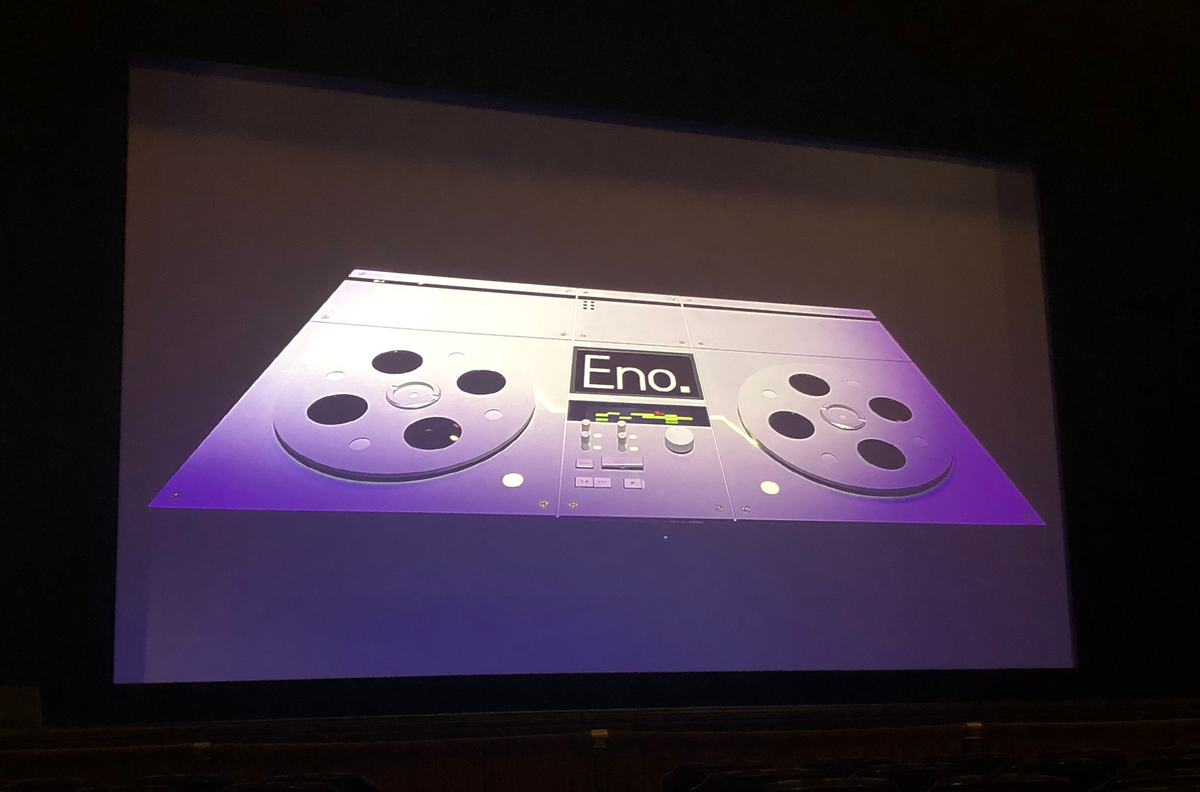
jukeboxgraduate dot com is a subscriber-only newsletter about rock and roll, written by Caryn Rose. Some installments are free, others are only for paid subscribers. thanks for your interest and support.
I did zero homework before buying a ticket to a screening of the new Brian Eno documentary here in Detroit. The advertisement for it used a photograph of Eno's turntable design that U2 used as their stage at their recent residency at the Sphere. I could not click BUY fast enough.
Brian Peter George St. John le Baptiste de la Salle Eno (I’m so glad the filmmakers had him recite the entire name on screen; from the crowd reaction I wonder how many people thought it was a joke) has been involved in so much music and art that has been essential to my life that it was a no-brainer. He is someone whose work and process I have followed out of historical interest, due to all of those intersections and because he is one of those people that is always working on things that interest me. The audience at the Detroit Film Theatre, a beautifully restored 1927 space that’s part of the Detroit Institute of Arts, was absolutely a representation of Eno’s various phases. There were goths. There were art students. There were aging punks. There were baby punks. There were Hat Guys.
This film is being called a “generative documentary.” The version I saw was unique to Detroit (version 2.17!) and no one will ever see it again. The director, Gary Hustwit (he did the Helvetica doc, so there’s your bona fide) mixes each screening of the film live, using software he helped create. This is one of the reasons why Eno agreed to participate in a documentary about his life, something he has not previously wanted to do because they are boring. This film is not boring.
The thought at the back of my mind walking in was, how are you possibly going to make a documentary about the length and breadth of this man’s work and have it be truly representative? How are you going to do that and not have someone walk out afterwards complaining that something essential was missing? It’s only 90-ish minutes but I did not have that feeling at the end of the film. I felt that I knew even more about his work and his process and his mindset and his approach to all of the above and – this is important – how it has evolved over time than I previously did, and I am someone who has read his recently published diaries.
In the Q&A after the film, Hustwit noted that what’s unique about this documentary is that “the audience makes the connections.” That is its superpower, that is what is so engrossing about it. Your brain will literally be sitting there not just watching and listening but then making the crossover back and forth between other scenes or even other things you know about Eno. There isn’t someone telling you what everything is or where it is filmed or why it is important, there aren't even any subtitles telling you who people are or what year something is happening. The content and the music and the scene have to be enough to convey the message.
There was a lot of Roxy Music to begin the film, and that was surprising to me because I’ve always felt that Eno has tended to dismiss or hand wave that era of his art as less important than what came after it. I don’t know whether the amount of Roxy in the film is because he’s revised that position or because Detroit goes hard for Roxy Music so the generative software gave us bonus Roxy. (Don’t get too excited – if you are the kind of person who gets excited about live Roxy Music footage you have already seen everything that appears in this film.) But I appreciated the narration and what felt like a more balanced outlook at that part of his career.
The dude is remarkably unpretentious in the interview footage for the film. And that’s something I have noticed, he’s more relatable when he’s speaking than when he’s asked to write something. He’s definitely relatable in the archival interview footage where a large black cat hops onto his shoulder and curls up on top of the lavalier mic he’s wearing and purrs so loudly they have to stop the interview. He’s also highly relatable when he’s out in his garden geeking out over some bugs he found on one of his trees.
There’s also a scene where he is presented with a series of micro-cassettes from his archive and he explains that since he doesn’t know how to write music, when he had ideas for melodies or songs he had to sing them into a tape recorder. He then picks up various tapes and plays them, with lots of self-deprecation and eye-rolling. But then there’s the moment where he listens for a couple of seconds and says, “Oh, it’s me and Bono.” The film then cuts to the Unforgettable Fire documentary, where he’s working with U2 at Slane Castle. Bono’s very 80s mullet got a big laugh, but that overlooked the point of the segment which was to make that connection from sketches on a tape to a song that ended up being a defining moment for the band.
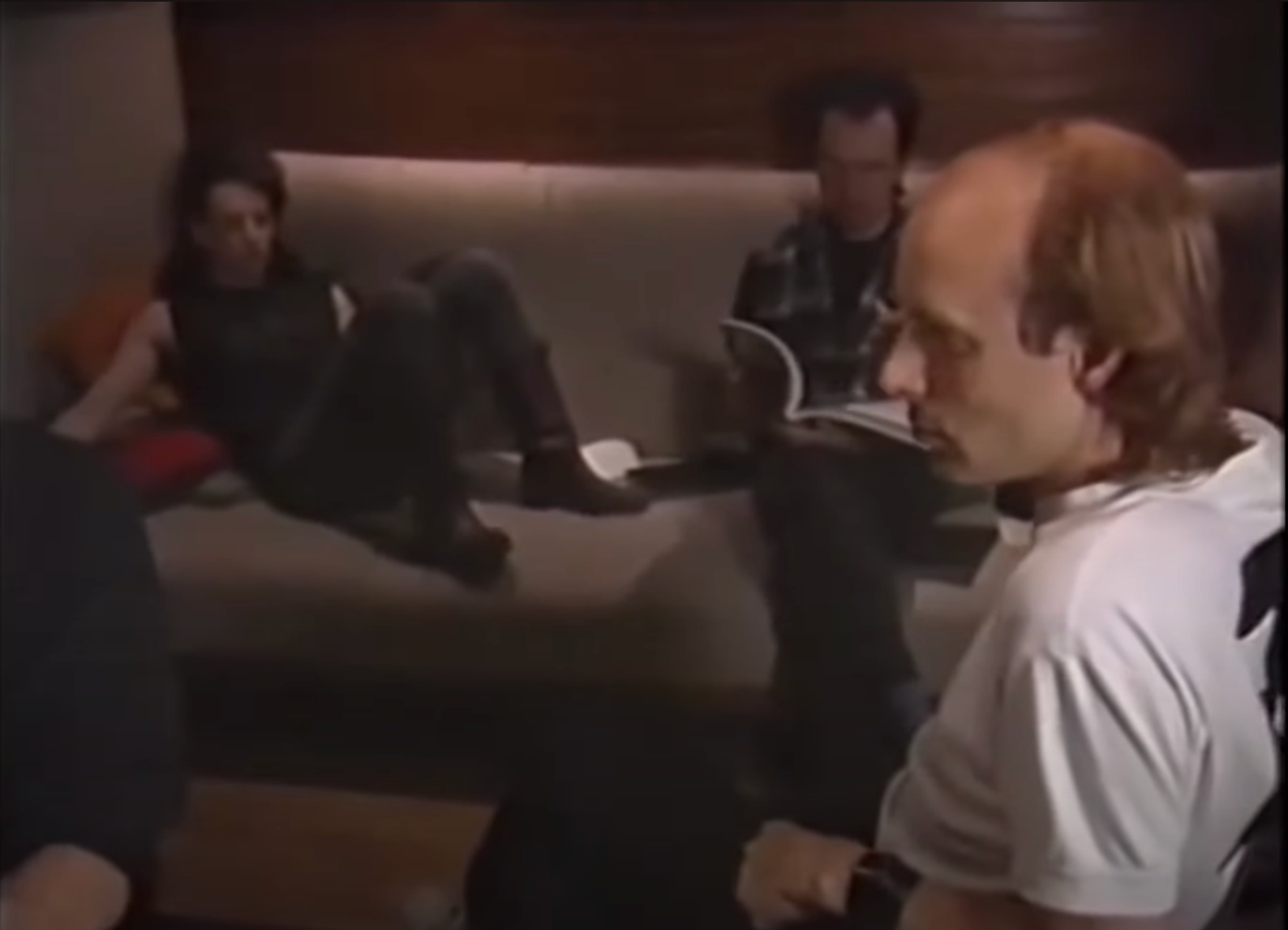
Eno explains that the way he and Daniel Lanois liked to work was to have some sound or loop or tape going before the band got to the studio, so that when they came in there was something to react to immediately, instead of doing the traditional thing where the band comes in, you listen to what you did yesterday, and then you figure out where to go next. One of those loops was something that inspired the drums on “Pride (In The Name of Love).”
From what I saw in this version of the documentary (remember, it's generative, so you will see things I did not), Eno isn’t the place to go to get your extremely rare footage fix. The U2 content was released for promo and then later as part of the album box set. The Roxy Music footage is all Beat Club or Musikladen (thank goodness for German tv shows, home of great live footage of so many bands in the 70s and 80s). If there had been unearthed live footage of any band then the audience would focus on the rarity and be distracted from the narrative. At least that’s how I processed the intention, but I have seen all of those things before so seeing Eno in feathers and glitter in his Roxy years was not new information. What Eno was saying about his time in the band and what he contributed and what he took away from it for his artistic process was the focus.
The best way you can help this newsletter is to recommend it or share it with folks you think would enjoy it. Please feel free to forward emails to friends but I ask that you not copy and paste entire posts to mailing lists, Reddit or similar - an excerpt with a link is totally fine! Thanks for your interest!
Other ways to help: tip jar | buy books
There was a nice segment with David Byrne and his solo work with Eno, as well as Eno explaining the progression in his mind between things he was listening to (Fela Kuti in this case) and how he brought it to Talking Heads. He talked about Oblique Strategies, the creativity flash cards he developed with the visual artist Peter Schmidt, how they came about and how he uses them himself, and we get to see an early handwritten version of the cards. A woman who sat behind me explained them to her companion as “cards with… sentences” which seemed a bit broad of a description, even for something Eno-related, but Eno’s never been prescriptive or dogmatic about them, they’re just a tool, they’re a tool he was using and other people were interested in them so he made them into a form that other people could consume. If you’ve ever read any interviews with him, this won’t surprise you - he likes having tools that help him do his work but he’s never particularly precious about any of them.
There is a lot of description of process and I am always interested in an artist’s process but Eno’s descriptions of his worklife is usually so delightfully mundane – in the diaries he talked about riding the bus to his studio, or walking if he had the time – so I appreciated the interview where he talked about how he used to sequence his morning with breakfast and reading and email, and then he realized it was all input, so he decided to stop doing that, and found that the result was having more space for output and ideas. He even waits until midday to have breakfast. (And then notes that he is very hungry but it is only 11:30 so he can’t eat yet.) There is so much out there about creativity and process and how to do it that is firmly couched in this is the way you must do it. Eno is the polar opposite of that.
The only element I would have liked more of was some exploration of Eno’s light art installations -- there are many in the background of the shoots, but that’s output you have to experience in person and I haven’t had as much opportunity to do that compared to the ability to listen to anything musical he’s worked on.
My one critique was the sound. I know I am old and have hearing issues but I don’t usually have this much trouble understanding spoken word in films. Detroit Film Theater has very good sound so I don’t know if that was part of it. But I’d be interested to hear about other people’s experience with this aspect. I do not have trouble understanding English accents but this was a slog at times, too much distorted treble in some archival interview segments.
Finally, the big revelation in the film that I need to share is this: at some point, Joni Mitchell phoned Eno and said she wanted to do an ambient record with him. Eno’s response was that he didn’t really do ambient records any more. When he relates this exchange in the film, you can literally see the mortification and pain in his face and then he elaborates on what a stupid response this was and how he still regrets it (this is all new interview footage, Hustwit spent a year going through Eno’s archives and interviewing him) and then breaks the fourth wall to tell Joni that it’s not too late! (Except, you know, it kind of is. But maybe not!)
During the Q&A the interviewer asked Hustwit if he’d thought about what the plans were for streaming, given that the film is generative and there isn’t one true version. He said that there was some discussion of it just being a 24 hour continuous stream, maybe the version would change based on the time of day, showing quieter sequences at night, etc. It took every ounce of my being to not yell out YES PLEASE DO THIS. This would be a dream.
About ⅓ of the way into the film there was a commotion towards the back of the theater, a woman began yelling about how this was bullshit and you don’t know anything and after people trying to get her to stop yelling, the theater did the right thing and removed her from the room. Eno is still annoying people, but unlike our current stupid culture of ANNOYANCE and DISRUPTION he’s doing it simply by doing the work, learning from it, changing things, tinkering with them some more, doing it again.
I’ll end with a card randomly chosen from Oblique Strategies:
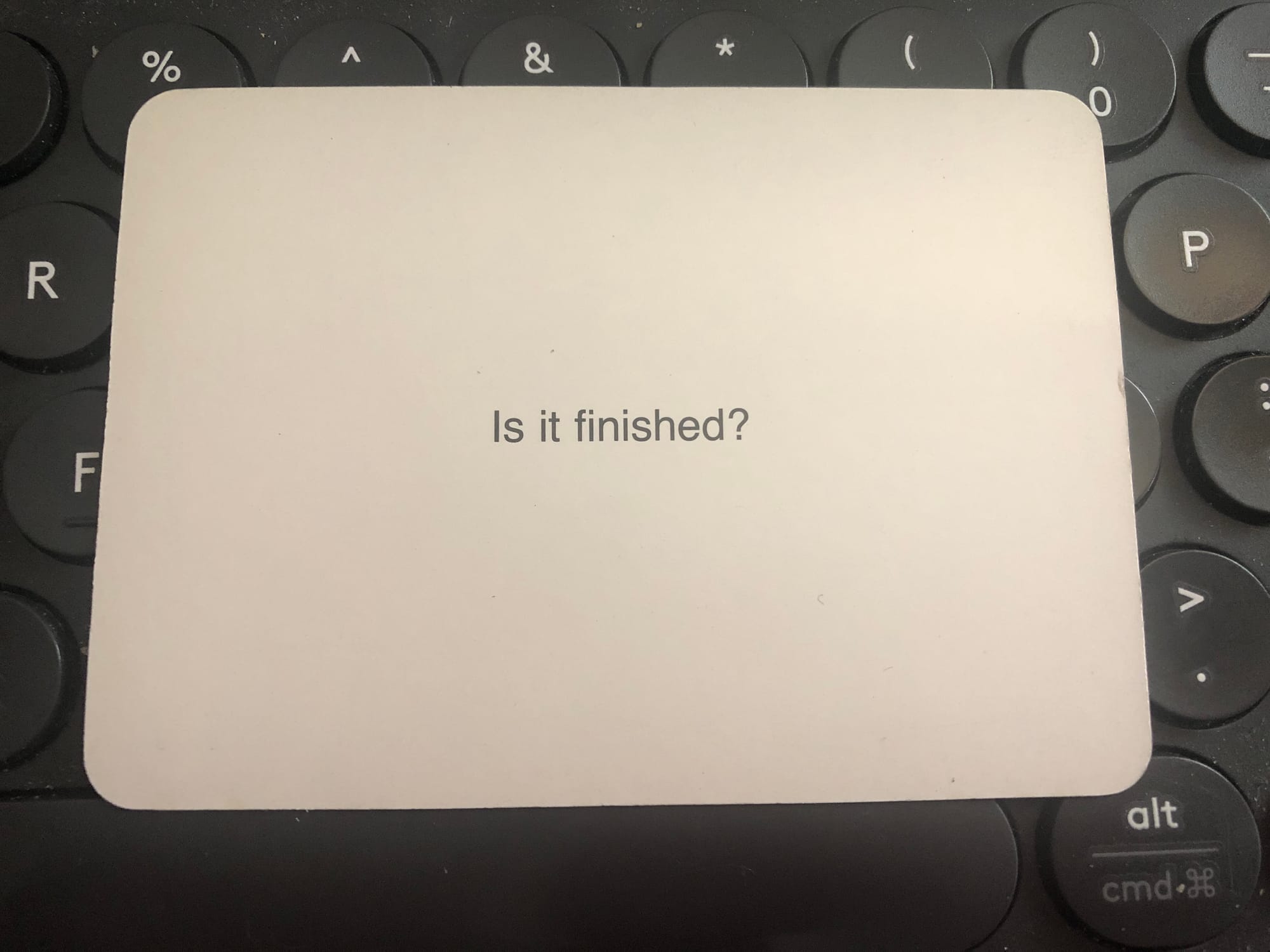
Accurate.
Comments are closed to everyone except paid subscribers because it's so much fun to be a woman writing about rock and roll on the internet.

